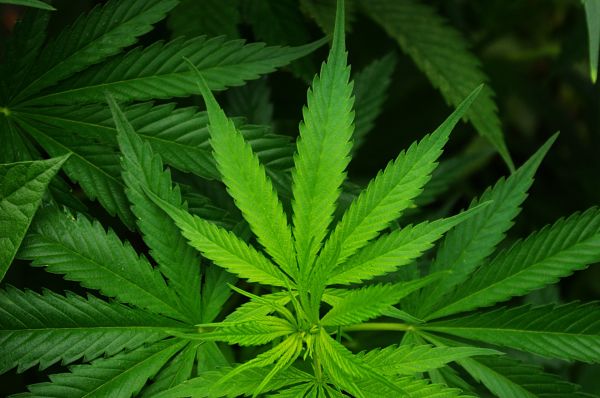Archived Webinar: Marijuana on the Mind – A Primer for Policymakers

Staci Gruber, left, and Kelly Sagar
“Policy has clearly outpaced science” in the United States on the issue of legalizing marijuana for either medical or recreational use, say two researchers from Harvard University and McLean Hospital, a psychiatric hospital affiliated with the Harvard Medical School. “As the majority of U.S. states now have access to medical and/or recreational marijuana, it is imperative to provide information and education in order for individuals to make well-informed decisions.”
Eight U.S. states have legalized recreational use of marijuana, 11 are considering loosening their laws this year, and even Congress is half-heartedly looking at ending the federal restriction on state pot laws. And yet the effect on marijuana on the brain, for good or for ill, is poorly understood and in desperate need of further study, and states like California aren’t even sure how to measure impairment for activities like driving.
Those researchers, Staci A. Gruber and Kelly A. Sagar, authored a recent article in the current issue of Policy Insights from the Behavioral and Brain Sciences and sat down for a webinar in mid-March to discuss the current state of science on how marijuana affects individuals, and especially teens. Gruber is an associate professor of psychiatry at the Harvard Medical School and director of both the Cognitive and Clinical Neuroimaging Core and Marijuana Investigations for Neuroscientific Discovery at McLean, while Sagar is a research associate in psychiatry at McLean.
The webinar is archived below. The webinar was sponsored by the Federation of Associations in Behavioral & Brain Sciencesand Social Science Space.
***
In addition to the recording, the authors also have answered below a number of audience questions asked at the webinar which they didn’t have time to answer in the hour-long event.
Are there any defining characteristics of early onset marijuana users?
In our work, individuals with early onset MJ use, defined as regular, consistent use prior to age 16, tended to use MJ more frequently and in higher amounts relative to those individual who began MJ use after age 16. As demonstrated in our presentation, it is generally the early onset MJ users who demonstrate poorer cognitive performance relative to late onset MJ users. Interestingly, thus far, we have not observed any differences between early and late users on measures of clinical state, personality, or impulsivity.
I know that some studies have found that risk-taking behavior is correlated with substance misuse, and that people who are more likely to use are more likely to take risks in general. How did you control for these kinds of behavioral traits when you conducted your study? Early users might have impulse control issues before ever using marijuana for the first time.
Absolutely correct and a great question as many studies have indeed noted increased impulsivity among those who use substances. In our work, all individuals undergo a comprehensive clinical and diagnostic assessment in order for us to ensure that potential subjects are free of conditions that might impact our study findings, and complete a battery of other measures assessing clinical, behavioral, personality and other domains. For analyses, groups are well matched on a number of variables including education, age, socioeconomic status and several other factors. Interestingly, no differences were detected between the early onset MJ group (regular, consistent MJ use prior to age 16) as compared to the late onset MJ group (regular, consistent MJ use AFTER age 16) with regard to measures of self reported impulsivity. Despite this, we did see significantly worse performance on tasks related to executive function and a relationship between lower white matter organization and higher impulsivity within the early onset MJ use group. The question of whether impulsivity is a cause or an effect of MJ use is best addressed in longitudinal studies, similar to the large scale ABCD study currently underway across the country which will assess a large cohort of healthy children aged 9-10 at baseline and over the course of a 10-year period.
Is there previous research that looks at the same early versus late onset impact of pharmaceuticals such as antidepressants, antipsychotics, and anxiolytics on brain function?
While this is a bit beyond the scope of our presentation, exposure to medications including antidepressants, anxiolytics, stimulants and antipsychotics has grown increasingly common in children and adolescents. While we haven’t come across direct comparisons of “early” vs. “late” exposure in the same model we used in our investigations, given the increased vulnerability of the developing brain during this period, a number of investigations have explored this issue primarily using animal models.
Is there any evidence based practice about the chronic use of MJ and the onset of dementia symptoms in presenium?
A timely question given ongoing dialogues regarding the use of cannabis and cannabinoid based products for individuals with neurodegenerative disorders including Alzheimer’s disease. While changes in cognitive function, specifically memory and difficulty with executive functions, have been reported among individuals who use marijuana, it is not clear that the use of marijuana would cause early dementia or symptoms of dementia (remember that dementia typically refers to a group of symptoms which severely impact cognitive and social abilities). Interestingly, several studies have demonstrated that some cannabinoids (i.e cannabidiol) can reduce oxidative stress, neuroinflammation and the formation of amyloid plaques, a hallmark of Alzheimer’s disease; additional research is needed.
Because CBD has anxiolytic and anti-psychotic effects, could it possibly have an effect on mood regulation too?
Indeed, although there is little formal research in this area to date, many who take CBD rich products report improvements in mood related symptoms, an encouraging finding with regard to future investigations. Early data from our MIND program (Marijuana Investigations for Neuroscientific Discovery) has demonstrated improvements in mood following three months of treatment with cannabinoid containing products; a number of patients were on a regimen of high CBD-containing compounds.
Under the “cannabinoid” do you include cannabinoids that are on the market legally such as Marinol?
In general, our presentation referred to “cannabinoids” as those that are naturally occurring (i.e. phytocannabinoids) within the plant Cannabis Sativa L. All naturally occurring cannabinoids from the plant fall under Schedule I designation within the Controlled Substance Act (CSA), described as having “no currently accepted medical use, no demonstrated safety profile and a high potential for abuse” and therefore remain illegal at the federal level. Marinol and Syndros both contain a synthetic form of delta-9-tetrahydocannabinol (THC) and are classified as Schedule III substances under the CSA. Schedule III substances are those which are deemed to have a moderate or low potential for abuse and have a currently accepted use for medical treatment in the US, and thus products like Marinol and Syndros are available via prescription. Cesamet (nabilone) is a synthetic analogue of THC and falls under Schedule II, suggesting a high potential for abuse.
Referring to inpatient and patients that have a medical MJ med card, do you know of any facilities allowing the use of marijuana in a hospital/inpatient setting?
The state versus federal legal status of cannabis and cannabinoids can make it complicated for hospitals to develop policies around medical marijuana use. Doctors cannot “prescribe” cannabis nor can pharmacies “dispense” it; instead, physicians provide certifications or recommendations for cannabis use. However, more recently, we have seen some hospitals start to adopt policies that permit use of cannabinoid-based therapies among certified users. For example, according to online sources, at the Mayo Clinic in Minnesota, if a certified medical cannabis user is admitted to the hospital, the admitting physician determines if continuation of cannabis treatment is appropriate. Further, all products to be used by patients must be in the original containers as dispensed by the state’s approved facilities, and only certain products (i.e., capsules and tinctures) are permitted.
Up until today, there should be 29 states and DC passed medical marijuana. The slide shows 28 states. Can you verify?
Currently, it would appear that 28 states plus the District of Columbia is the correct statistic regarding legal medical marijuana within the U.S. Some sites, like Wikipedia, consider Louisiana to have medical marijuana because a bill was recently passed to allow prescribers to recommend medical marijuana. It also created protections for patients who lawfully possess medical marijuana. However, Louisiana did not legalize distribution or cultivation (in other words, patients cannot legally gain access to medical marijuana). Furthermore, the legislation requires doctors in Louisiana to recommend dosage amounts, which may put physicians at risk of violating federal drug laws. Therefore, we – along with other organizations such as the Marijuana Policy Project and the National Council of State Legislatures – do not consider Louisiana to have a medical marijuana program.





























































































Its time to make marijuana legal. Even for medical purposes, it’s important. thanks for giving useful information.
I totally agree that “The state versus federal legal status of cannabis and cannabinoids can make it complicated for hospitals to develop policies around medical marijuana use.” Let’s fight for cannabis legalization!
Great post! Let’s support cannabis legalization!
It appears even more states are coming online! Soon the entire country will embrace what has always been and always be a miracle planyt!
It is about time to legalize cannabis even for recreational use. It’s a good thing that states are considering it. Yes to marijuana! Thank you for the insightful info!